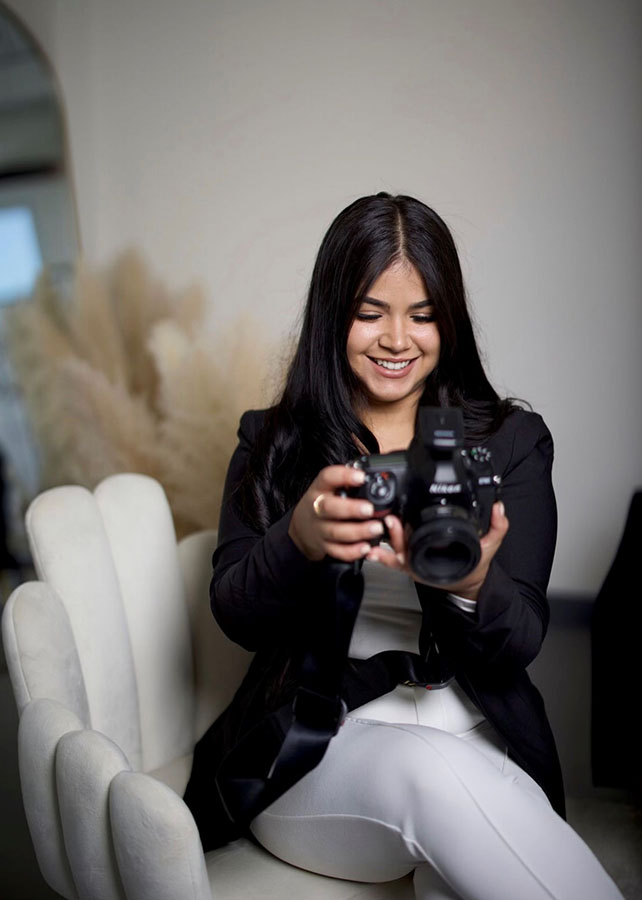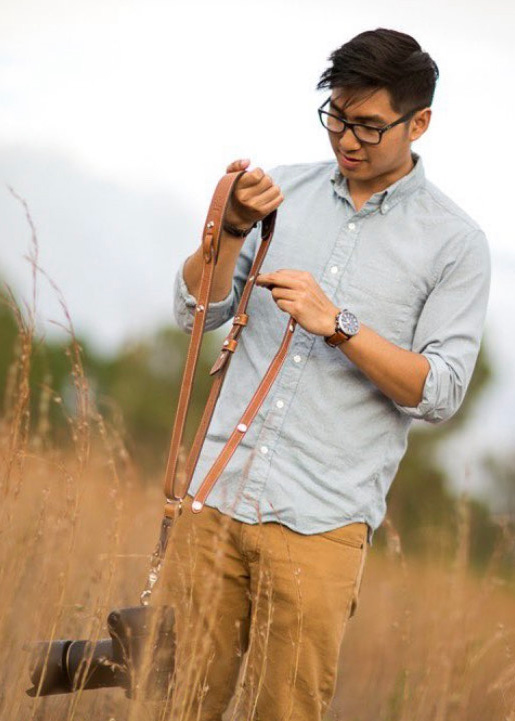Product photography for e-commerce is more than just a visual tool it’s the key to boost your online visibility and grow your business. These professional product photos are crucial for product presentation and can make or break your ecommerce store.
Think about it: online shoppers can’t touch, try, or feel your product. All they get is what you give them visually. Over 75% of online shoppers say product photos influence their buying decisions more than product descriptions. That’s why good product photography isn’t just a nice-to-have; it’s a key business investment.
This guide is designed to walk you through everything you need to know for your ecommerce photography, from choosing the right style and tools to optimizing your images for SEO and conversions behind your product. Whether you’re creating your visuals in-house or considering outsourcing, we’ll help you capture photos that not only look good but also sell better.
Why product photography matters in e-commerce?
When customers can’t touch or feel a product in person, they rely entirely on visuals to make judgments. High-quality images on your product pages boost trust and drive online sales. Your ecommerce website depends on visuals that clearly showcase your products and elevate your ecommerce experience.
Here’s what great product photography can do for your business:
- ✅ Increase trust and credibility – High-quality visuals imply high-quality products.
- 📈 Improve click-through rates (CTR) on product pages and ads.
- 🔁 Reduce returns by clearly setting expectations.
- 🧠 Strengthen your brand identity across every sales channel.
Poor product photos, on the other hand, can make even the best item feel cheap or sketchy. Inconsistent lighting, cluttered backgrounds, or low resolution can all send the wrong message. And the worst part? Most customers won’t tell you. They’ll just bounce. The visuals in your online store speak louder than any sales copy.
Types of e-commerce product photography
These types of e-commerce product photography, ranging from product shots on white backgrounds to lifestyle photography and model photography, are widely used across various e-commerc business models. Especially in fashion photography, the right type can elevate your product presence instantly.
Below are five of the most effective formats used in every type of ecommerce photography to enhance visual storytelling and improve conversions:
Different types of photos serve different purposes:
Not all photos serve the same purpose. Choosing the right type of image can elevate your product and speak directly to your customer. Here are the five most effective styles in e-commerce photography:
1. Studio Shots
Studio shots are the foundation of online product imagery, especially on platforms like Amazon. With a plain white or neutral background, they keep all attention on the product itself. This setup is perfect for capturing product details with clarity and consistency.
- White or seamless background
- Distraction-free and clean
- Ideal for product listings on marketplaces
2. Lifestyle Shots
Lifestyle photography puts your product in a real-world context. It tells a story and helps potential buyers imagine using it in their daily lives. It’s especially powerful for websites, ad creatives, and social media content. Model photography can humanize your product and show scale, especially for fashion and accessories.
- Showcases the product in action
- Builds emotional connection
- Perfect for Instagram and brand storytelling
3. Flat Lay Photography
Flat lays involve placing your products neatly on a surface and shooting from above. It’s one of the most stylish formats, used often in fashion, beauty, food, and tech accessories and other aspects of your product.
- Editorial, curated aesthetic.
- Popular with influencers and modern brands
- Emphasizes product arrangement and colors
4. Ghost Mannequin Shots
Great for clothing and apparel, ghost mannequin photography keeps the product’s shape without showing a model. It’s sleek, minimal, and ideal for clean, professional presentations.
- Maintains the structure of garments
- No need for live models
- Works beautifully on fashion e-commerce sites
5. 360° Product Views
360° photography allows users to rotate the product and view it from every angle. It’s interactive and especially useful for high-involvement products like electronics or furniture.
- Builds buyer confidence and the product in use.
- Reduces hesitation by showcasing every detail
- Enhances engagement with interactive UI
Essential photography setup for e-commerce
A professional photographer might bring advanced lighting setups, but you can still do a lot at home. You don’t need an expensive studio to take professional-looking product photos to elevate your ecommerce, just the right gear and a bit of know-how the tools you need. Whether you’re working with a basic studio setup or DIY tools like poster board and natural light source, the right photography equipment can drastically elevate your professional ecommerce photography. Below are the key tools that can elevate your e-commerce photography without breaking the bank:
You don’t need a full studio setup to get started, but the right tools you need to help:
- Camera: DSLR is ideal, but smartphones work great with proper lighting
- Tripod: Keeps your shots stable and consistent
- Lighting: Softbox or ring light setups; natural lighting is also a great option
- Backdrop: White, seamless paper or DIY lightbox for clean backgrounds
- Reflectors/Diffusers: To soften or redirect light
DIY product photography tips for your ecommerce
Use simple setups to take product photos that highlight key features of your product. Even as a small product photographer, you can compete visually with big brands without expensive tools, you can enhance your product visuals, and create photos of your products that sell.
Here are some proven low-budget hacks:
- 📸 Natural light: Shoot next to a large window during the day. Diffuse with white curtains or foam boards, that is crucial for product and a good light source.
- 💡 Homemade lightbox: Create one with a cardboard box, white backgorund, and LED desk lamps that enhance your product and all the features of your product.
- 📱 Smartphone + editing apps: Use apps like Snapseed or Lightroom Mobile for powerful edits.
- ⏱️ Tripod and timer: Eliminate handshakes and keep everything in frame.
- 🔁 Be consistent: Use the same angle, lighting, and setup for every product to maintain a uniform catalog.
Many of these tactics are used by small brands that punch way above their weight visually.
Best practices for capturing high-quality product photos
- Use a consistent background to maintain brand cohesiveness
- Shoot from multiple angles (front, side, back, close-up)
- Show scale by including familiar items or measurements
- Highlight product details (textures, zippers, buttons)
- Avoid harsh shadows; Avoid placing harsh lighting onto the product use reflectors to soften shadows.
- Use props or models when appropriate to show usage
Editing and post-processing tools for product photography
Great photos become even better with editing. Recommended tools:
- Lightroom (Desktop & Mobile)
- Canva (great for batch editing and layouts)
- Photoshop (advanced retouching)
- Remove.bg (quick background removal)
- TinyPNG or ImageOptim (for compressing images without quality loss)
Product photography common mistakes
Avoid uploading ecommerce photos with poor depth of field or lack of focus. Learn to position your product effectively and use photo editing software to refine the final result. Also, we want to mention other common mistakes:
- Overexposed or underexposed images
- Inconsistent lighting across photos
- Unfocused or blurry shots
- Not optimizing image file sizes
- Ignoring mobile responsiveness
- Too many distracting props or backgrounds
Optimizing product photography for SEO
Great product images deserve to be seen and that means making sure they’re optimized for both search engines and your potential buyers. Solid SEO practices for ecommerce photos can dramatically boost your online visibility and improve the performance of your ecommerce sites.
When optimizing, don’t forget that photos of your products are also content. They’re not just illustrations; they’re product photos to make your listings stand out in search.
Here are the key SEO steps to ensure your images are working as hard as your content:
-
🔠 Use descriptive filenames (e.g.,
leather-wallet-black.jpg) to clearly represent the features of your product. -
🖼️ Include keyword-rich alt text describing what’s shown. This supports accessibility and allows Google to index aspects of your product visually.
-
📏 Compress your images using tools like TinyPNG or ImageOptim to reduce file size without quality loss critical for ecommerce websites loading speed. Compressed, optimized images speed up your online store, improving user experience.
-
🌐 Use modern image formats like WebP to improve performance and user experience on mobile and desktop.
-
🧩 Add structured data (schema) for each product image to help search engines understand and rank your professional ecommerce photography.
Also, don’t underestimate the role of photo editing software like Lightroom, Photoshop, or Canva in preparing your images for SEO. A polished image not only attracts customers but also helps enhance your product visually to match search expectations.
If you upload a product without proper tags, descriptions, or structure, it might never rank. With a few tweaks, you can make every image part of your strategy to boost your online presence and drive more sales.
Whether you hire a professional photographer or go DIY, what matters is visual quality, product photography studio, or trying your own hand at Amazon product photography, remember: quality visuals aren’t optional—they’re essential. With the right tools and strategy, you can reduce turnaround time, grow your e-commerce business, and shine among the best ecommerce brands.
Contact us to book the best experience and boost your sales. Start your free consultation with our photography team today.
Product Photography for E-commerce FAQ
What’s the best background for e-commerce product photos?
The best background for e-commerce product photography is a plain white backdrop. A white or light-neutral background keeps all focus on the product, eliminates distractions, and ensures color accuracy. This is especially effective for platforms like Amazon product photography, where a white background is often required. Using a white seamless paper, poster board, or professional studio setup helps you achieve a clean and consistent look across all your ecommerce product photos.
Can I take good product photos with a smartphone?
Absolutely! You can take high-quality product photos using most modern smartphones—if you combine them with the right tools. A good light source, a steady tripod, and photo editing software like Lightroom Mobile or Snapseed can transform smartphone shots into professional product photography. It’s a cost-effective option for small ecommerce businesses or startups looking to improve their ecommerce photos without a large budget.
How many product photos should I include?
For best results, include at least 4 to 6 product shots per item. Showcase the product from multiple angles (front, side, back), add detailed close-ups of features of your product, and include at least one lifestyle photography shot that shows the product in use. This helps your audience fully understand what they’re buying and reduces the chances of returns—crucial for professional ecommerce photography success. Consistency across all product pages also helps create a more cohesive brand experience.
What’s the best image format for e-commerce?
The best image format for ecommerce product photography is WebP, thanks to its superior compression and fast load times. While JPEG remains widely used and supported across all platforms, WebP is optimized for modern browsers and helps boost your online store’s performance. Smaller file sizes mean faster page loads, which improve both SEO and user experience on your ecommerce website.
Contact us to book the best experience to boost your sales
📞 Phone: +1 407 733-0015
✉️ Email: contact@magnafoto.com












